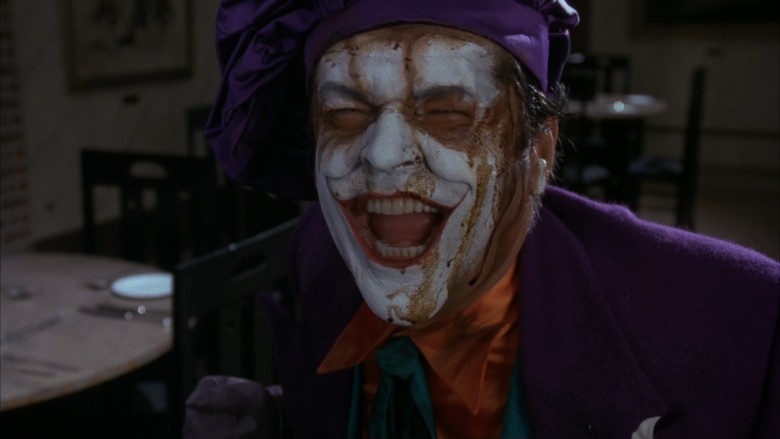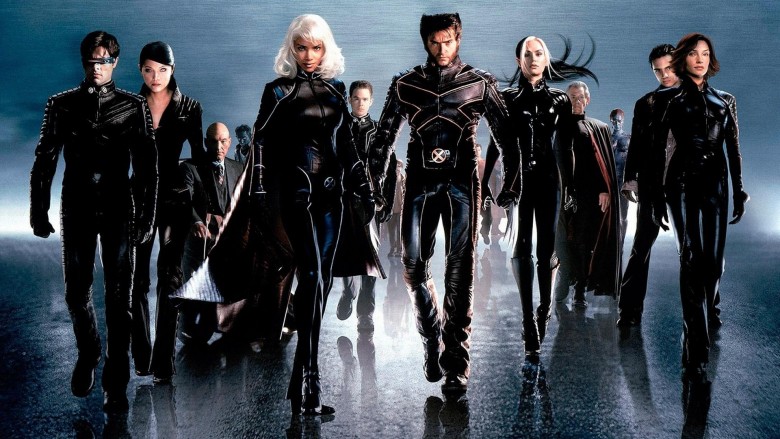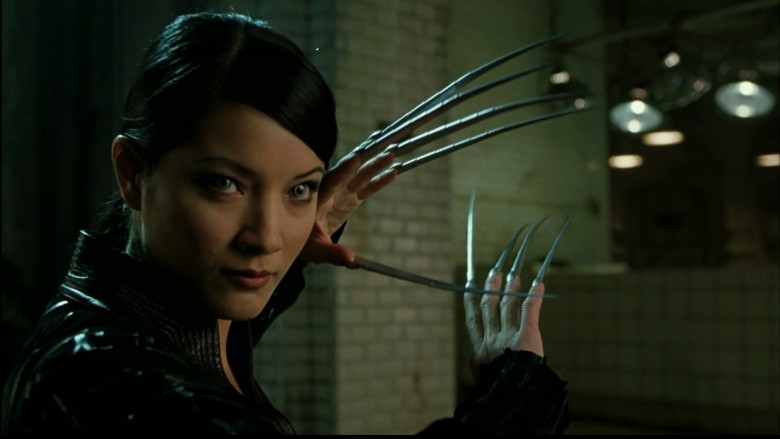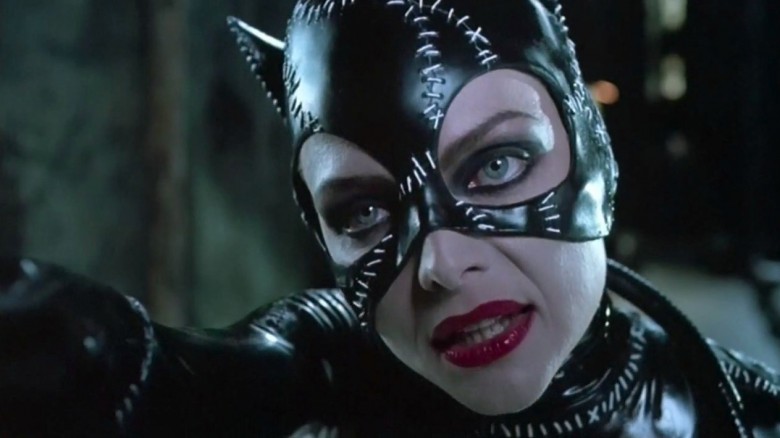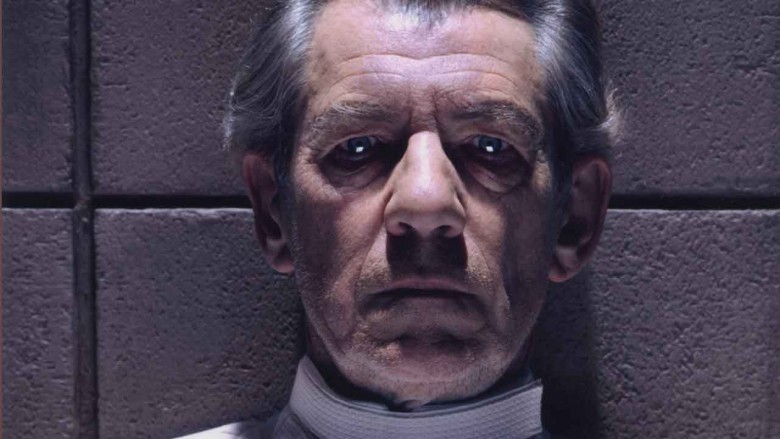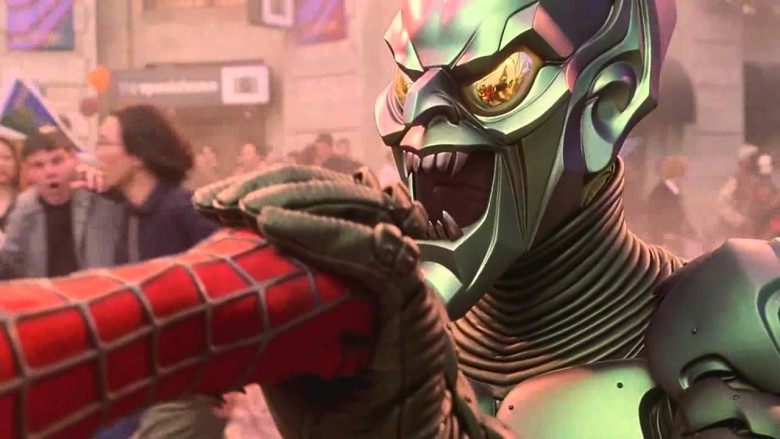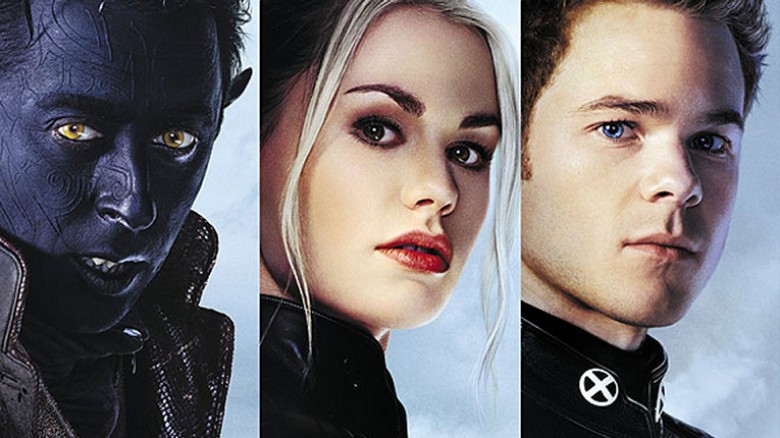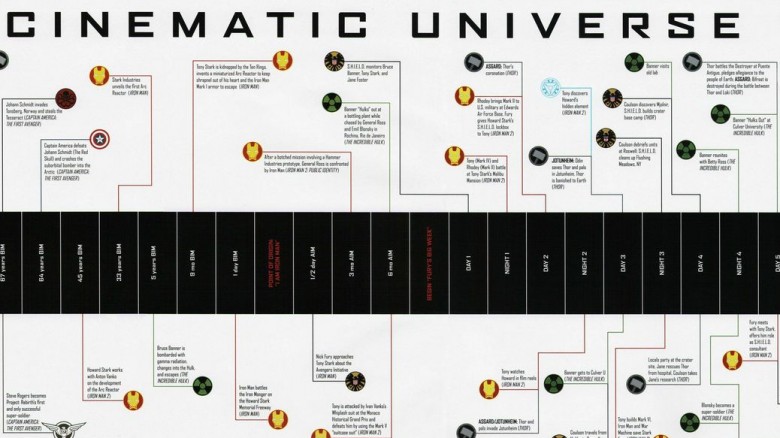Superhero Movie Trends Killed By The MCU
The Marvel Cinematic Universe has completely changed the shape of superhero movies. Understandably, studios like Warner Bros. want to get a piece of the action by creating their own extended universes, but this isn't the only way modern superhero movies have tried to copy the magical MCU formula. Along the way, certain features that were previously staples of the genre have been left by the wayside—from the clothes characters wear to the villains they face. Let's take an in-depth look at the types of superhero movies we'll probably never see again—and the filmmaking trends killed off by the MCU.
The well-developed villain
Before the Marvel Cinematic Universe came along, it was common to have a well-developed villain. We saw full-on origin stories for characters like the Joker (showcasing his transformation from hired gun to clownish crime boss) and the Penguin (Oswald's rise from neglected child to political prominence and power). Green Goblin was given a complex arc in Spider-Man as we followed his descent into madness, and Magneto served as the ultimate well-developed villain in his journey from persecuted child to powerful adult..
The MCU's first villains started out pretty weak. Even with Jeff Bridges hamming it up in Iron Man, Obadiah Stane mostly comes across as the dark mirror of Tony Stark, a metaphor made literal in the "good Iron Man vs. evil Iron Man" finale. In The Incredible Hulk, Hulk fights the Abomination, whose characterization is "evil Hulk." Loki is typically held up as the example of a good MCU villain, but it took three movie appearances to give him any real character arc, and his motivations are constantly murky and ill-defined.
Eventually, the MCU all but gave up: characters like Ronan the Accuser and Kaecilius just exist to be mouthpieces for their nameless henchmen. This eventually rippled out to other superhero movies, with Batman v Superman giving us villains like a nonsensical Lex Luthor and an electric cave troll Doomsday. Suicide Squad's villain was literally a dancing witch with zero characterization, and the X-Men: Apocalypse movie gave us more backstory for characters' hair changes than it did for Apocalypse or the specifics of his goals.
Dark costumes
Here's a trend killed by the MCU that very few people miss: the crazy focus on dark costumes. With the notable exception of the colorful Spider-Man (and good old-fashioned Superman), most pre-MCU superhero and comic movies focused on characters in dark attire. This included the black-armored Batman, the black-clothed Blade, and the monochrome wardrobe of the Men in Black. When the first X-Men movie debuted, the colorful comic characters were suddenly wearing black leather that would have been more at home in the Matrix of Neo than the Mansion of Xavier.
The MCU doesn't translate comics costumes perfectly: they tend to be a bit darker and more realistic. Overall, characters all sport their recognizable colors, such as the patriotic red, white, and blue of Captain America and the iconic red and gold of Iron Man. This effect seems to have rippled out: while Ben Affleck's Batman remains appropriately clad in black, the Suicide Squad ended up having some very vibrant colors, including Harley Quinn's borderline neon color combinations, the white and red of Deadshot, and so on. The X-Men's costumes have gotten more colorful, too, with the final scene of X-Men: Apocalypse offering a reveal of the new team in their bright comics costumes. And Deadpool arguably takes home the prize for the most vibrant costume—a complete departure from his toned-down appearance in the first Wolverine movie.
Memorable henchmen
Just as many pre-MCU superhero movies had more sympathetic and well-developed villains, a good number of them also had very memorable henchmen. The first Superman movie, for instance, had Ned Beatty playing Otis, a happy-but-hapless assistant working alongside Lex Luthor. Jack Nicholson's Joker in the 1989 Batman movie was capably helped by Bob the Goon, who has several notable encounters with Batman and Bob's boss, the Joker, before being memorably murdered by Joker. The X-Men movies typically had henchmen with cool powers and personalities (such as Mystique and Sabertooth), and even the less memorable henchmen provided amazing fight scenes (such as Lady Deathstrike).
The Avengers ended up being a game-changer in the worst possible way. Joss Whedon wanted his heroes to be able to cut loose without upsetting his viewers with graphic violence, so the Avengers' foes were an army of faceless and conveniently robot-like aliens. This kicked off a trend, with the Avengers sequel including literal robot henchmen while Guardians of the Galaxy had an army of more faceless and disposable goons. Superhero villains have grown more interchangeable and forgettable, as with every Kryptonian not named Zod in Man of Steel or the Enchantress's brother in Suicide Squad. In Batman v Superman, Doomsday is reduced to a brainless monster, somehow ending up even less memorable than the legion of nameless thugs that Batman takes out with the unrealistic grace of a video game cutscene. And X-Men: Apocalypse gives us horsemen of Apocalypse that are just one-note descriptions (Angel? Angry flying guy. Psylocke? Angry stabby girl).
Well-developed girlfriends
One upon a time, it wasn't uncommon for superhero movies to feature well-developed girlfriends. Superman is the gold standard—Lois is so prominent in the plot, she can't be easily written off. In the 1989 Batman, Vicki Vale is central to the story and a driven, engaging character in her own right. And in Batman Returns, the girlfriend is Selina Kyle, a character who essentially steals the entire show. Spider-Man and X-Men, like the original Superman, have the benefit of the "girlfriend" characters (Mary Jane and Jean Grey, respectively) being an integral part of the plot, so they grow as both individuals and as part of the hero's life.
The MCU feels retrograde right from the start. Cheeky Gwyneth Paltrow can't change that her character, Pepper Potts, literally exists only to serve Tony Stark, having little life or agency on her own. Jane Foster is supposed to be a genius, but she becomes a giggling girl when she sees Chris Hemsworth's Thor. Jane is effectively written out of the MCU after two movies, and Bruce Banner's girlfriend, Betty Ross, is gone after one. Even Pepper Potts' appearances seem on indefinite "break," as Tony says in Civil War, making it clear that these girlfriends won't be getting any more development in the ongoing story.
After the debut of the MCU, other superhero movies started to suffer, as Catwoman's Dark Knight Rises performance is all over the place (from angry anarchist to having a billionaire boyfriend). Zack Snyder seems to have given up on developing a Clark/Lois romance, as we go from zero spark in Man of Steel to boringly brief domesticity in Batman v Superman. Suicide Squad's Harley is probably the best modern superhero "girlfriend," chiefly because most of her scenes with Joker ended up on the cutting room floor, allowing her to shine at the expense of romantic development.
Campy plots
While later Batman movies deliberately distanced themselves from the camp of the Adam West-led TV series, the truth is that before the MCU, superhero movies tended to have very campy plots. Superman turned back time by simply flying around the world. Joker created an ersatz Prince music video within his own film as he vandalized art, and in the sequel, Penguin planned to conquer Gotham by putting rocket launchers on penguins. Batman Forever had Riddler collecting brainwaves! Meanwhile, Spider-Man 3 included an alien suit turning Peter Parker into a street-dancing creep, and the X-Men tackled Magneto's evil plan to mutate the world's leaders through magnetism.
For better or for worse, the MCU brought everything down to Earth. Plots were almost always simple tales about keeping technology or magic out of the wrong hands and eventually just turned into tales about keeping X villain from destroying a city, state, or entire planet. The vast majority of the MCU movies amount to "stop them from blowing stuff up with their advanced weaponry," and aside from the token banter, the actual plots tend to be pretty serious.
This ultimately affected other superhero movies: the X-Men franchise grounded itself in historical events such as the Cuban Missile Crisis and Vietnam, while Dark Knight Rises replaced the philosophical complexity of The Dark Knight with a fairly generic "villain plans to blow up the city with advanced weaponry" story (sound familiar?). And, of course, Man of Steel and Batman v Superman amounted to Zack Snyder dancing on camp's grave as he presented takes on these characters and plots that were so grim and joyless, he was eventually forced to reassure everyone that the Justice League movies might try to make you smile from time to time.
Sympathetic villains
In addition to being more well-developed in terms of background and motivation, pre-MCU villains in superhero and comics media tended to be more sympathetic. Early Joker is presented as a gangster even before his transformation, but he's also betrayed by his boss and experiences a horrible disfiguring accident that drives him crazy. Similarly, Penguin comes across as a manipulative monster, but Batman Returns opens with his parents abandoning him to almost certain death because of his physical deformities. You don't have to be a psychologist to track their later motivations to these earlier traumas. Similarly, the campy Green Goblin of the first Spider-Man is presented as a caring father and driven CEO who, even when driven crazy, still expresses a twisted affection for Spider-Man and is also insistent that his son Harry never be devastated by revelations of his father's villainy. And of course, Holocaust survivor Magneto is the king of sympathetic villains.
With the MCU, Loki comes closest to being sympathetic because we see his discovery of his real parentage and the questions this raises, which naturally feeds into his sibling rivalry with Thor. Most villains, though, are not sympathetic at all: pretty much all of Iron Man's villains simply want more money and power. Ultron wants to destroy the world over a simple misinterpretation, while characters like Ronan the Accuser are basically just cookie-cutter terrorists. This trend started showing up outside the MCU too. In Amazing Spider-Man 2, Electro was simply a disgruntled worker. We never learn why Apocalypse has his Darwinian philosophy in X-Men: Apocalypse, so we can't be sympathetic to it. And Batman v Superman and Suicide Squad are the bottom of the barrel: Lex Luthor has no discernible background or motivation, and the Enchantress seems to be inherently evil rather than complex and sympathetic.
Memorable music
The Superman theme song by John Williams is still instantly memorable, and Danny Elfman's score for the 1989 Batman provided the theme song that defined the character for millions of Bat-fans. Even the Spider-Man movies had a theme song that helped to define the character and his adventures. The MCU, in contrast, has pretty much given up on developing great music—likely for a couple of reasons. One is the popularity of simply licensing music instead, from the obvious use of Black Sabbath in Iron Man to the classic rock of Guardians of the Galaxy and the soulful swagger of Luke Cage. With all that licensed music, there isn't as much room for a great score to shine. Also, starting with the first Iron Man, the MCU is known for being very chatty—characters practically trip over each other to deliver the next quip or punchline, so there aren't as many opportunities for theme music to stretch across an otherwise quiet scene.
Unfortunately, this trend has overtaken other superhero and comic movies. Warner Bros. opted for a clean break from the past when building the DC Extended Universe, so neither Man of Steel nor Batman v Superman featured John Williams' Superman theme—which would be fine if they hadn't replaced it with mostly forgettable action music filler. And Deadpool, like the MCU before it, relied a lot on licensed music (such as memorable songs ranging from "Angel of the Morning" to "X Gon' Give It To Ya") rather than developing a memorable, original theme.
Smaller stakes
During the pre-MCU era, while Superman set a high bar by saving the West Coast from a nuclear missile, most heroes had smaller stakes. Batman, for instance, mostly fights corruption—villains like Joker and Penguin are dangerous the same way a mass shooter is dangerous, but when held against later cinematic threats like Loki and Thanos, they're clearly small potatoes. Similarly, the first Green Goblin is mostly a threat to Mary Jane and May Parker (and the Oscorp Board of Directors), but he doesn't pose a legitimate threat of large-scale destruction. Magneto poses one of the bigger pre-MCU threats, but even his plan to mutate assembled world leaders on Ellis Island would have affected a small (albeit high-ranking) number of people.
After a slow start, the MCU established the standard that an entire city must be in danger—or, even better, an entire planet. Thor fights to save an entire realm of Frost Giants (basically, their entire planet), for instance, and later saves the entire Earth from the Dark Elves. The Avengers fight off an alien invasion meant to eventually take control of the planet, and later fight Ultron, who plans to destroy all human life on Earth. The Guardians of the Galaxy similarly protect an entire planet, and even Ant-Man (who's about as small-scale as you can get) is fighting to keep completely game-changing technology from being sold to worldwide terrorist threat Hydra.
This high-stakes trend has continued into non-MCU movies like X-Men: Apocalypse (the mutants are now fighting to save the whole planet), Logan (Logan is effectively fighting against the utter extinction of mutantkind), and the DCEU (Zod plans to effectively kill everyone on Earth, while Lex Luthor's rogue Doomsday represents a threat to the entire city and, if left unchecked, the world).
Audience surrogates
Another trend that the MCU killed in superhero and comics movies was the use of the audience surrogate character—an outsider who, like the audience, is introduced to an established universe of pre-existing heroes and plots and reacts the way the audience would. In the first X-Men movie, both Logan and Rogue fill that role, and in the immediate sequels, younger mutants like Iceman and Kitty Pryde served this function as they transitioned from simple students to full-fledged team members. In Men in Black, Will Smith's character J becomes a full part of the weird, wacky world inhabited by Tommy Lee Jones' K. In the first Blade movie, Karen serves as our human surrogate into the world of vampires and vampire-hunting. Sometimes, love interests also serve this function: we learn about both Bruce Wayne and Batman via Vicki Vale in 1989's Batman, for instance.
For better or for worse, the MCU did away with audience surrogates, because the films focus on the heroes' origins. We're with Tony Stark when he's kidnapped, we follow Thor's trials on Earth to become worthy of wielding Mjolnir again, and we follow Star-Lord and the rest of the Guardians of the Galaxy as they fight for something larger than themselves. The closest surrogate character in the MCU was Captain America fanboy Philip Coulson, but he was quickly shuffled off the big screen.
This lack of surrogates has also affected non-MCU movies. Later mutant-centric movies like Deadpool and Logan center on title characters that, MCU-style, introduce us to their world. Man of Steel, despite having Lois Lane right there, doesn't really use her as an audience surrogate: the audience learns more about Krypton and Superman via awkward Russell Crowe flashbacks and hologram appearances than we do via Lois or other supporting characters. And Batman v Superman rather jarringly has no real introduction at all to Batman or Gotham City.
Disconnected universes
Before the MCU came along, there was almost zero studio interest in connecting superheroes' worlds. While fanboys enjoyed daydreaming about seeing them onscreen together, it was simply accepted that Tim Burton's Batman had nothing to do with the Richard Donner Superman. Similarly, characters like the X-Men never intersected with other Marvel characters—even those under the same creative roof, such as the Fantastic Four.
Iron Man, of course, changed all of that. As soon as Nick Fury invited Tony Stark to be part of a larger world, every new MCU movie inched further toward developing an ongoing mythology that eventually spanned movies, television shows, comics, and more. It was such an effective idea that other studios shamelessly started copying it. Many people, for example, blame the plot and pacing problems of Batman v. Superman on Warner Bros.' need to lay the groundwork for an extended universe in a single movie. Amazing Spider-Man 2 had an awkwardly jam-packed ending with multiple cameos that was intended to set up a completely separate Spider-Man cinematic universe. And on the small screen, the so-called "Arrowverse" has enjoyed great success in letting Flash, Green Arrow, the Legends of Tomorrow, and even Supergirl play in the same televised sandbox.
As Warner Bros. continues full steam ahead with their DC Extended Universe, Sony establishes a separate Spiderverse with a Venom movie, and the X-Men universe grows ever larger with spinoff franchises like Deadpool and X-Force, it looks like we might never return to disconnected universes again.

